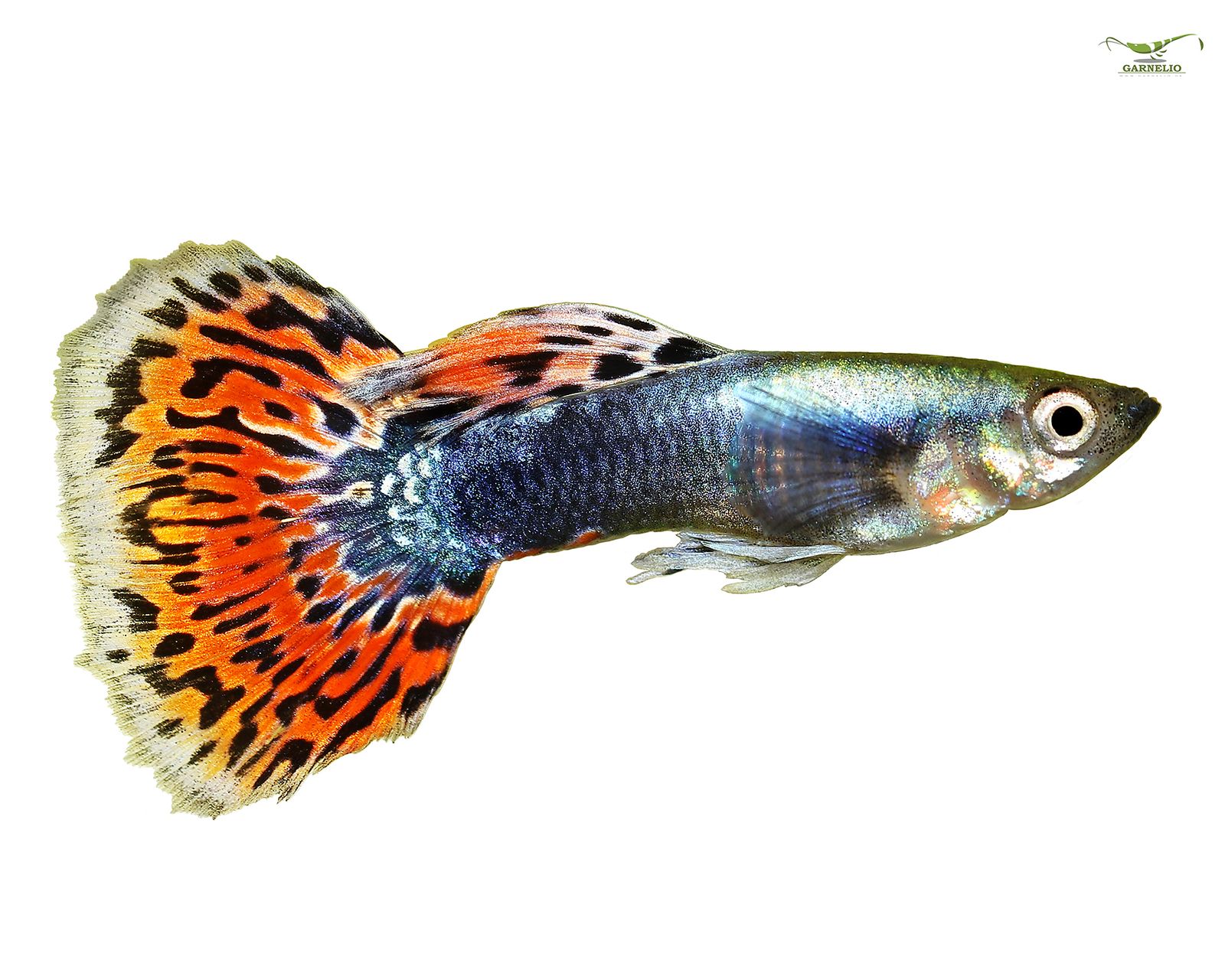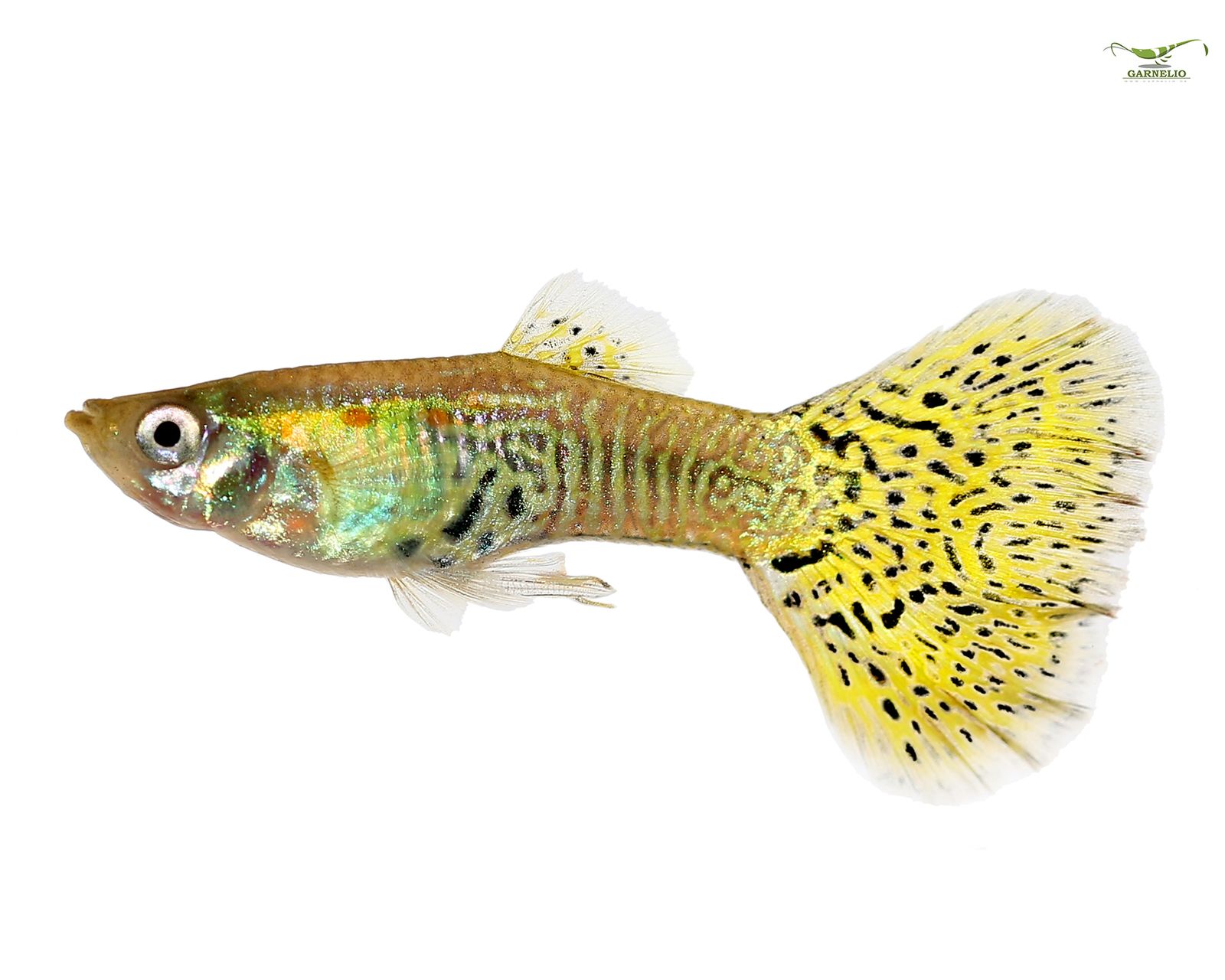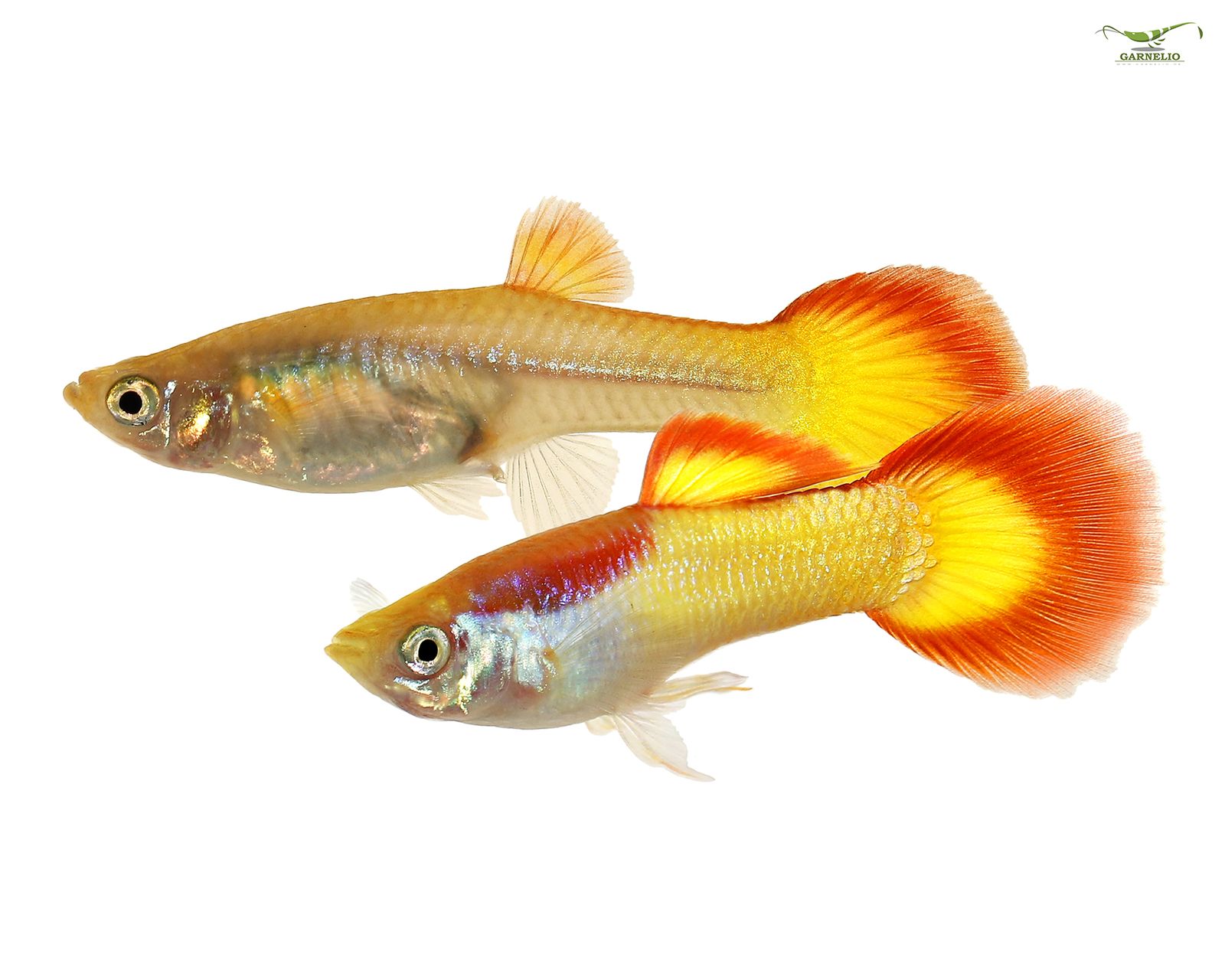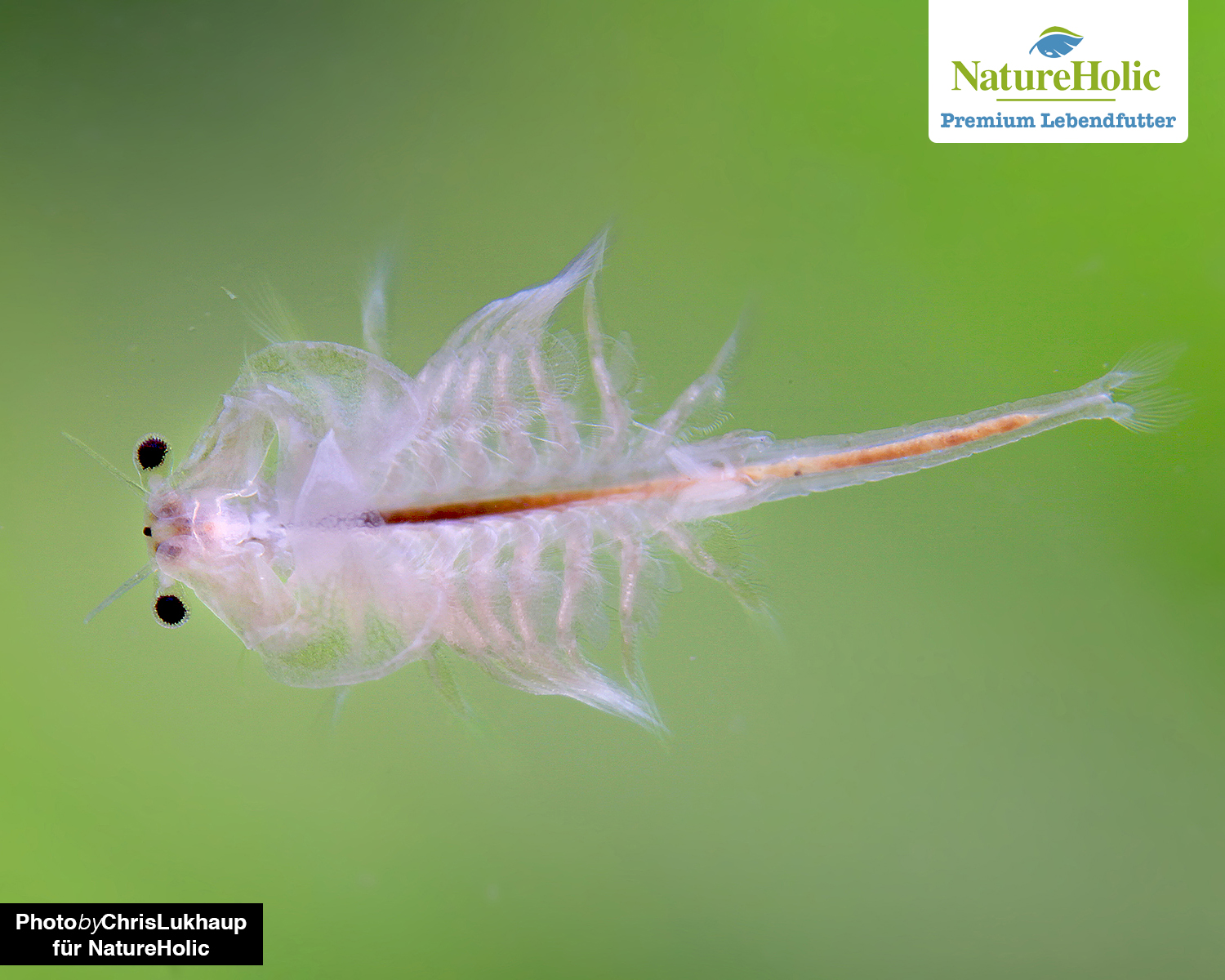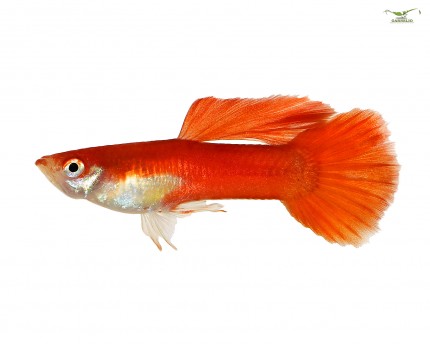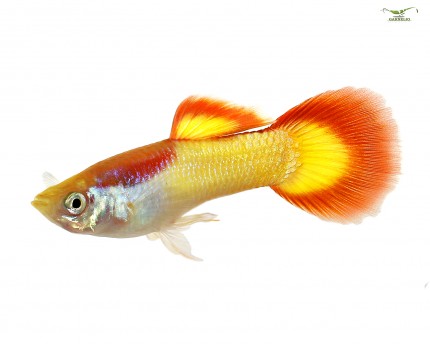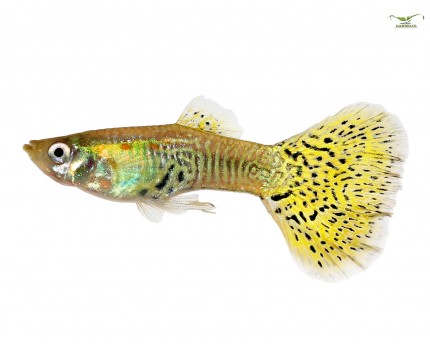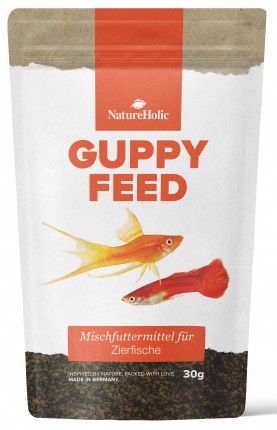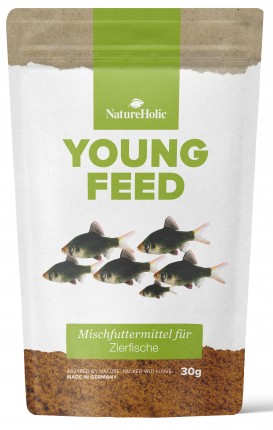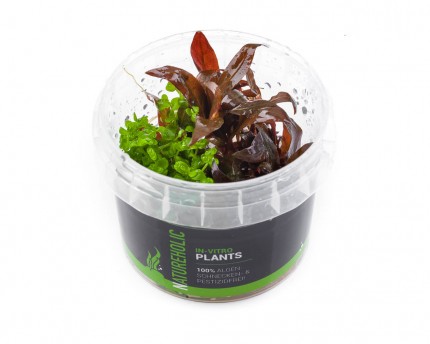The guppy in the aquarium (Poecilia reticulata)
Table of contents
- Water values for guppies
- The guppy aquarium - the setup
- Guppy keeping in the aquarium - behavior
- New guppies to existing stock - quarantine
- Socialization of Guppies
- The correct feeding
- Guppy breeding - sex differentiation
- Deformities and malformations
- Guppy breeding
The Guppy(Poecilia reticulata) is considered to be THE beginner fish for aquaristics par excellence, and we certainly don't go too far out on a limb when we say that we hardly know any aquarist who has not kept Guppies in the aquarium at some time in his career. Originally, the so-called million fish Poecilia reticulata comes from South America, but in the meantime the robust, resistant small fish have established themselves worldwide practically everywhere where the water temperatures allow them to survive even in winter. Guppies belong to the live-bearing toothcarps.
Guppies are colorful and are said to be extremely robust and therefore suitable for beginners. They reproduce with virtually no input from the keeper, and they have beautiful colors and great fin shapes. Healthy male Guppies grow to about 4 cm in length. Females grow even larger with a body length of up to 8 cm. With the Guppy there are on the one hand the colorful 08/25 animals from the pet shop, often offsprings from private hands, which have changed hands for a can of food - but there are also the others, the high breeding Guppies. Here we have carefully selected strains with a high color purity, very special patterns and fin shapes. Each breeding form has its own name and there are even breeding standards that specify what a healthy high breeding guppy should look like. Especially the I.K.G.H. (International Curatorship Guppy High Breeding) should be mentioned here, which has made a special contribution to guppy breeding.
Water values for guppies
Before we start with the breeding of guppies, let's have a look at the general keeping conditions for Poecilia reticulata. Guppies tolerate relatively soft to very hard water, they even occur in nature in estuaries with brackish water. Some carbonate hardness should be present, they do not like very soft water with a low pH. We recommend a GH of 10 to 25, a KH of 5-20, a pH of 7 to 8.5 and a water temperature of 22 to 28 °C. Different water values are tolerated and the information varies greatly from author to author, but we have had the best experience with these values.
The Guppyaquarium - the equipment
The peaceful, rather lively Guppies can be kept in a standard tank with an edge length of 60 cm or more. A good planting along the edges is recommended - sometimes guppies just lay down on a big leaf of a water plant to sleep and chill there. They also like to hide. Part of the water surface should definitely be left clear, as guppies are strongly surface oriented and like to hang out below the water surface, slurping away biofilms or even eating fine approach food. In a guppy aquarium, for example, springtails that make the water surface unsafe have no chance!
The guppy aquarium can be nicely furnished with roots and stones, but this is not absolutely necessary, because guppies do not mark out territories. However, hiding places are advantageous for the females - male guppies are always ready and can stress the females quite a bit. A retreat in the form of a partially dense planting in front of the reproductive masters of creation is sometimes necessary, so that the girls have a break. Too much stress makes ill - this also applies to fiercely courted female guppies. Good filtration is an advantage, guppies can feed quite a lot and have a correspondingly active metabolism.
Guppy keeping in the aquarium - the behavior
Guppies are group fish and should be kept in a group size from 10 fish upwards. The lively colorful guppies are great to watch because there is always something going on in an aquarium with them. In a mixed group, the males are actually constantly busy chasing after the ladies and hitting on them. Due to the great reproductive joy of the guppies - they bear the nickname million fish not entirely unjustified - you should plan enough space. As nasty as it sounds, predators for the fry in the form of small tetras naturally serve as population regulators.
If you want to avoid this, put either pure male groups or pure female groups in the aquarium. However, you must keep in mind that female guppies can be fertilized in stock and can still have young up to 11 times without having had contact with a male again. Nothing is lost to the fish by keeping them in single-sex groups, they still feel comfortable and exhibit most of their species-specific behavior.
New guppies to existing stock - quarantine
By now, word has spread that adding new guppies can cause problems with the existing stock or with the new additions. Guppies can react sensitively to foreign bacteria and become ill or even die. This can be prevented by quarantine. To do this, do not put the fish in the aquarium with the others at first, but first in an extra tank, preferably with the same water. When the fish are acclimatized after one or two weeks and everything is in order, some water is exchanged back and forth between the aquarium and the quarantine tank daily, so that the bacterial strains can equalize.
Socialization of Guppies
The peaceful guppies are not riotous and can therefore be kept well in the aquarium with similarly sized, also peaceful fish - of course always provided that the demands on the water values match. We do not recommend keeping them with the very closely related Endler Guppy (Poecilia wingei), because the two species would produce reproductive hybrids. Guppies can also be kept together with invertebrates: Larger shrimp such as Amano shrimp are fine with the cheeky, curious guppies. Keeping them in the aquarium with dwarf shr imps can also be successful. Young shrimps are taken by the guppies, offspring only come through if the shrimps can hide well, for example in moss cushions. Robust snails can be kept well with guppies, sensitive snails can feel strongly disturbed by the almost a little pushy fish - antennae often look like worms to guppies, and accordingly they try to tug at them. This can disturb a shy snail so much that it can't get out of its shell. However, more robust snails such as ramshorn snails or racing snails do not let the guppies buy their guts and slice their way quite unimpressed. Large crayfish and crabs are more likely to see guppies as a live food supply and will grab and eat the odd fish. Since guppies sleep at the bottom of the aquarium, they are easy prey for pinchers, especially at night.
The right feeding
Guppies are true omnivores and they are not picky either. The males in particular can be quite greedy. The million fish has a so-called upper mouth, which means that the mouth opening points clearly towards the water surface. This does not mean that Guppies eat alone on top (even if they like to stay in the upper water layers), the whole aquarium is used for foraging. In doing so, the guppy also likes to pluck at tufts of algae.
Their food should consist of approximately half animal and half vegetable components. Guppies are not picky eaters, so you can make them very happy with flake or granulated food. NatureHolic Guppyfeed, for example, is particularly suitable, as it remains on the surface for a long time and allows the colorful aquarium fish to eat as they would in nature. Frozen food or small live foods such as black mosquito larvae or Artemia are also readily accepted. If guppies are fed a purely vegetable diet, not as many fry will get through, and the ornamental fish will remain smaller than their balanced-fed conspecifics. Carotenoids can enhance the colors of guppies, and there are studies that such foods are even taken preferentially. This fact has also been taken into account by the feed designer of the NatureHolic Guppyfeed.
Guppy breeding - sex differentiation
Guppies are sexually mature at the tender age of three months. The sexes in Guppies can be kept apart quite easily. The females are slightly less colorful than the males, and they grow significantly larger. They also have what is known as the pregnancy spot, a black spot on the end of the abdomen above the anal fin. This spot is always seen in female guppies, not just when they are pregnant - contrary to what its name might suggest. In males, the anal fin is remodeled into the so-called gonopodium. It is relatively long and quite thin, while in the female it has a "quite normal" roundish fin shape. The females are usually also noticeable by their very thick bellies - Guppy females are practically permanently "pregnant" and carry their young on the conveyor belt, which they give birth to alive, by the way.
Guppy breeding - the birth
The baby fish hatch out of the egg already in the mother's belly during the birth process and are born as a living little fish. Up to 120 young fish can be born per litter - the larger and older the female, the more the number of her offspring approaches this upper limit. That the birth is approaching can be seen from the female's behavior and her increasingly angular shape. It rests more often on large plant leaves or even lies down on the substrate. If it starts rocking back and forth on one spot, the birth is about to begin.
Survival of the fry
Since female guppies especially eat freshly born fry that are not yet able to get away quickly, you should provide dense planting in the natal aquarium - according to the principle "out of sight, out of mind". Spawning boxes with a grid in the lower area can also ensure that the fry fall out of reach. Here it is important to place the spawning boxes in the current, where sufficient fresh water flows through them.
Rearing the young fish
Young guppies can simply remain in the parent aquarium if you do not place special emphasis on a high survival rate. They like to eat dust food and Artemianauplia, look independently in the water plants for biofilms and microorganisms and pluck also already at fine algae coatings and other Aufwuchs.
Deformities and malformations
Due to heavy inbreeding, some Guppy strains have already developed deformities such as bent spines. These animals should be consistently excluded from reproduction and placed in same-sex groups to prevent them from passing on these characteristics. Extremely large fins can also severely limit the life of the fish, because excessively finned specimens are barely able to swim due to the weight of the fins. Breeding with moderation and purpose is certainly more effective here than striving for extremes.
Guppy high breeding
There are different approaches to high breeding guppies. They are bred for color (differentiating between base color and cover color), for pattern and for fin shapes - or for all characteristics.
Finshapes
In terms of fin shapes, guppies are divided into large fins, sword fins and short fins. This designation always refers to the shape of the tail fin.
In the case of the large fins, there is the triangular triangle shape, the angle of which is ideally 70°. In contrast, the fan tail of the same shape has "only" 45°. The veil tail is characterized by a curved, veil-like caudal fin, while the flag tail has an almost rectangular fin shape reminiscent of a flag.
Swordtails have a sword-like long appendage on the fin. In the double sword, two of these appendages sit on the relatively straight shaped caudal fin, one at the top and one at the bottom. In the upper sword only the upper end of the caudal fin is elongated, analogously in the lower sword the lower end. The lyrebird has a curved caudal fin with one sword above and one sword below.
The short fins still come closest to the natural form. The spade tail is rather angular, the spear tail curved and ending in a tip. If this tip is conspicuously elongated, it is called a needle tail. A pronounced round tail fin shape in the Guppy is called a round tail.
Basic colors
The basic color is on the entire body of the Guppy. It can be covered in parts by the cover color. The "wild" base color of the Guppy is gray. It is inherited dominantly, all other primary colors are inherited recessively. There are all kinds of colors - albinos with red eyes, lutinos with wine-red eyes, so-called blond guppies, golden or pink ones. Also a blue base color is possible, or a white color, cream or silver, or even mixtures like pink-blond or blue-pink. Even completely colorless, transparent guppies exist, the so-called super white glass or see-thru.
Opaque colors
The opaque colors cover the basic color of the guppies on some parts of the body. They are brightly colored - red, yellow, blue, greenish, turquoise, orange ... While the base color is already visible directly after birth, the cover color appears only with increasing age. This is where the beautiful variegated colors and patterns come to light! Especially striking is for example the Tuxedo pattern. Tuxedo stands for tailcoat in English. These Guppies have a dark, almost black pattern in the rear half of the body. Especially the males show great contrasts to the other colors and to the base color. In the color Japan Blue the eponymous blue top color shines almost like metallic paint. It can also appear in combination with other top colors. In addition, there are also Guppies with a leopard pattern on the tail fin or a snakeskin pattern on the body. Guppies, which have drawing patterns, which remind of Koi carps, or the so-called Moscow Blue, which captivate by a beautiful intensive dark blue. There is no limit to the colors and shapes, and guppy breeding will certainly hold many surprises and spectacular aquarium fish in the future.

